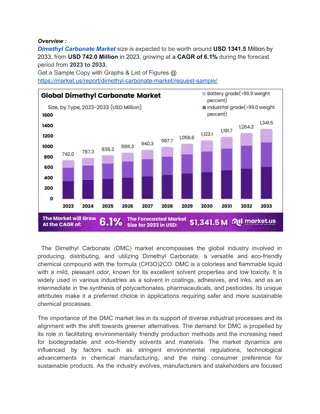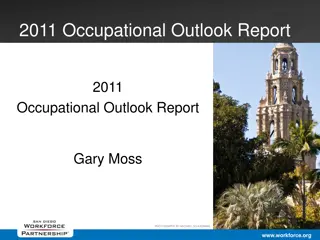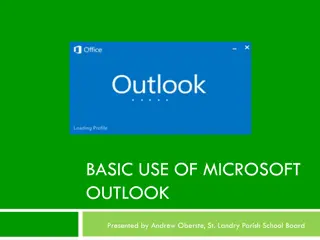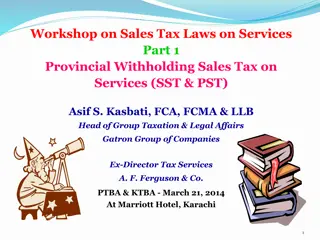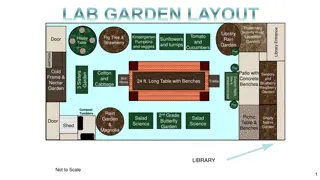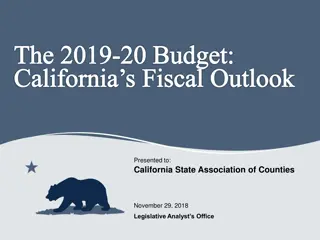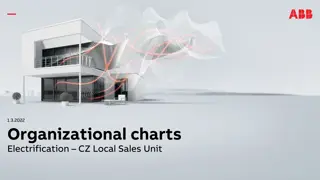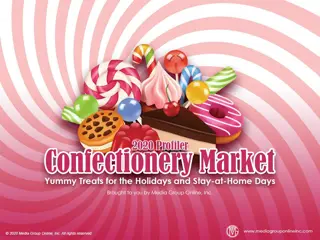Garden Industry Insights: Sales Growth, Trends, and Business Outlook
The latest data reveals that the garden industry in the US is experiencing a significant boost in sales, with consumers spending billions on lawn and garden products. The market for DIY and DIFM services is expanding, indicating a growing interest in flower gardening. Insights from garden centers show a mix of sales performance, economic recovery, and product trends. Overall, the industry is flourishing, with growers also anticipating increased sales and profits for the future.
Download Presentation

Please find below an Image/Link to download the presentation.
The content on the website is provided AS IS for your information and personal use only. It may not be sold, licensed, or shared on other websites without obtaining consent from the author. Download presentation by click this link. If you encounter any issues during the download, it is possible that the publisher has removed the file from their server.
E N D
Presentation Transcript
Sales Grow Vigorously According to the latest data from GardenResearch.com, US consumers spent $36.9 billion dollars on lawn and garden products and services during 2016, an increase of 2.2% from 2015. Flower gardening is at an all-time high. More than 90 million US households (74%) participated in do-it-yourself lawn-and-garden activities during 2016, with the average household spending $407 on lawn-and-garden products, a slight increase from 2015 s average of $401. The DIFM (do-it-for-me) market continues to increase, and the number of households that purchased landscape design, installation and maintenance doubled since 2012.
Garden Center Insights According to Garden Center, 90% of garden centers expected 2016 sales of less than $1 million, 36% had sales of $1 million $4.9 million and 13% had sales of $5 million or more, compared to 51%, 32% and 15%, respectively, for 2015. Almost all (92%) of the independent garden centers surveyed were family businesses, and two-thirds of them had been in business 15 to 74 years, with an additional 11% in business 75 years or longer. During 2017, 65% of garden center owners said they grow at least some of the plants they sell, with those in Midwest states the highest percentage, at 71%.
Garden Centers Sprouting Green The Garden Center survey reported that 39% of garden center owners said they had surpassed their sales/customer levels prior to the recession, with 25% saying they had return to pre-recession levels, and 34% hadn t recovered to those levels yet. More than 70% of garden center owners said their local economy had improved significantly (28%) or improved somewhat (48%) since the recession, with just 14% stated it had worsened (worsened somewhat, 11%; worsened significantly, 3%). The survey also revealed that 18% of garden centers employed more seasonal workers during spring 2017, the largest percentage since 2014, but 18% also said they employed fewer.
Garden Center Products Insights Of garden centers participating in the Garden Center State of the Industry survey, 15% said annuals generated the largest increase in sales compared to spring 2016; followed by trees/shrubs, 14%; perennials, 13%; succulents/cacti, 10%; and edibles, 8%. The best-selling green good at garden centers during spring 2017 were annuals, according to 37% of center owners; followed by hanging baskets, 13%; shrubs, 11%; edibles, 10%; perennials, 9%; and trees, 5%. The best-selling hard good or decorative item was bagged products, as 33% of center owners reported; followed by pottery/decorative containers, 15%; bulk materials, 12%; gifts, 7%; organic products, 5%; and yard art, 5%.
Growing Is Good Business As of August 2017, most growers expected 2017 sales to increase (62%) or stay the same (28%), compared to 2016, and 88% expected to make a profit. More than half, 51%, expected increased profits for 2017, with 14% expecting 20%+ profit. More than a quarter of growers (27%) expected annuals/bedding color to be the most in demand, followed by perennials at 25%. One in five planned to increase edible crop production, but this is a decreasing trend. Cannabis and cut flowers increased slightly. Growers primarily sell to landscapers (27%), independent garden centers (25%), direct to consumers at farmers markets (20%), other growers (18%), other direct to consumers (10%), regional chains (8%), big box retailers (7%), and mail order (7%).
Future Trends According to Hitwise s Home & Garden Trends 2017, the two most-engaged consumer segments are women aged 25 34 and women aged 55 64, and they are 21% more likely to engage with social media sites. As the climate shifts, gardeners are now looking for more resilient, weather-hardy plants that can survive droughts, floods, heat waves and milder winters. They are also planting large trees and shrubs and erecting retaining walls to protect from high winds. Plants that attract birds and butterflies are becoming more popular. Less-structured gardens with a variety of symbiotic plants are replacing formal bedding and lawns.
Advertising Strategies Show young people working together and relaxing in the garden to promote it as a social experience. Appeal to new homeowners by mailing them a coupon for a housewarming present of a small houseplant when they spend $30 with you. Hold gardening classes at your store once a month to create foot traffic.
New Media Strategies Create a blog, e-newsletter or video blog with tips on garden design for the changing climate conditions in your area. Advertise on realtor websites to attract new homebuyers and sellers looking to improve curb appeal. Offer photos of local, in-season plants and products as mobile phone wallpapers to app or text subscribers in addition to promotions for those items.








